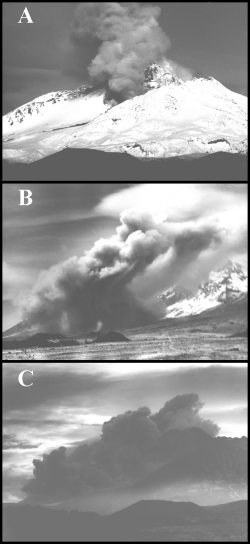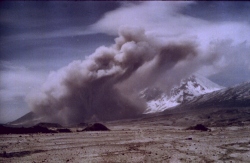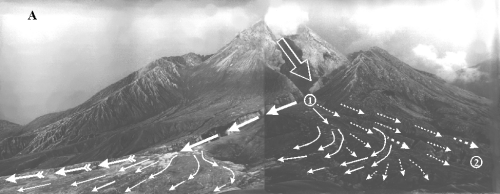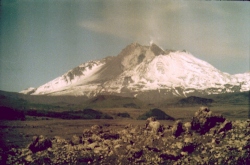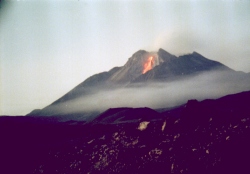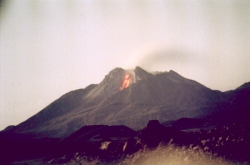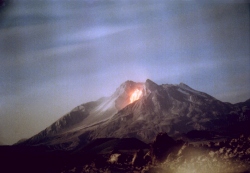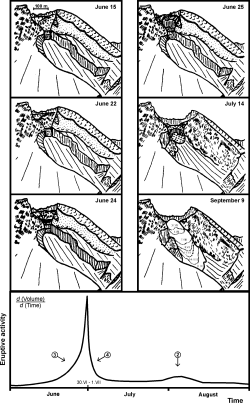The 1985 eruption
All pictures may be enlarged by left mouse click
Increasing activity of Volcano:
the collapse on June 12 (A) and autoexplosive avalanches on June 24
(B) and 25 (C), 1985
The pyroclastic flow on the evening of June 30, 1985. The photography
was made from small hill (the north spurs of Ziminy Volcanos - see the
point 6 on scheme of eruption or the point 5
on scheme of Apakhonchich
disposition). The twilights hide relief and perspective. Shortest distance
up to flow is 2 kms, and it front is on distance about 5 km..
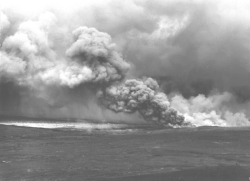 |
 |
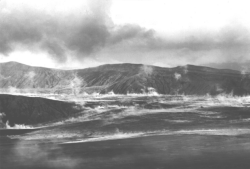 |
Above - Jule 1, 1985. Pyroclastic flows
blocked the channel of small river
(the point 4 on the scheme). Water from mountains
became the cause for repeated explosions on
hot deposits of pyroclastic flows.
At the left - the day after: water wins a victory.
Photos was made from the point 6 on the scheme |
The heels of two expeditionary lodges situated not far from dome (the
point 2 on the scheme) and destroyed by eruption.
One of the lodges sustained previous eruptions during more than twenty
years.
The scheme of eruption at
June 30 - Jule 1, 1985
Convention:
1 - the initial direction of superpower outflow of red hot pyroclasts;
2 - the paths of lightest pyroclasts' movement;
3 - the paths of pyroclastic flows' movement;
4 - the path of heavy debris-pyroclastic flow movement;
5 - the direction of wind drift of eruptive cloud;
6 - the deposition area of pyroclastic flows' material;
7 - the boundary of accretionary lapilli fall' area.
The gigantic crater in the dome structure was formed during the June
29 - July 2 eruption (at the upper left).
However the eruption didn't ended on this - the pressing of red hot
juvenile material was continued in crater's upper part.
In night the red hot material's collapses were accompanied by glow
(at the upper right and at the bottom).
The continued pressing of juvenile lava material resulted in the forming
of two lava flows (in August and in December).
Evolution of active block in the 1985
eruption
The arrows on diagram are showing states:
1 - the rest,
2 - the steady stationary development,
3 - the avalanche-like (the more the faster) increase
of activity,
4 - the avalanche-like (the less the slower) decrease
of activity.

Сайт управляется системой
uCoz